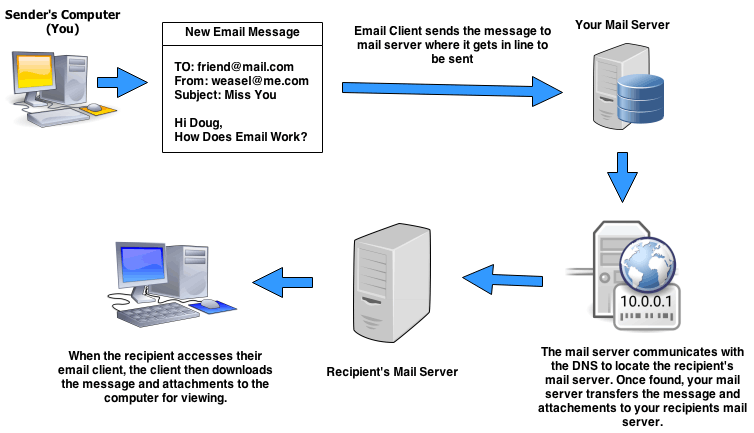You probably send and receive dozens of emails a day. But do you ever wonder to yourself, “How does email work?”. Not to worry, you are not alone. Most of us have a pretty good feel for how snail mail gets delivered. Today, we learn how email gets delivered.
It doesn’t matter if you are using email from work, home, a tablet, or mobile phone as the technology principles that allow email to work is the same. So lets explore how email works.
How Does Email Work: A History
Email was invented in 1971 after Ray Tomlinson, a computer engineer, started using the “@” symbol to direct where a message should go. Prior to this breakthrough, all one could do was send a message to a single computer, and with far too much effort involved at that. Since Tomlinson’s first email, legions of programmers have added additional functionalities such as attachments, links, multiple recipients and colors.
How Does Email Work?
To send or receive email you have to access what is formally called an “email client.” You may know some well-known email clients by their more familiar name such as Outlook, Gmail, or AOL Mail.
Step 1: User composes a message using their favorite email client.
Step 2: User presses send and the message along with any attachments are uploaded to what is called a “Mail Server” (POP3, SMTP) where it gets in line as outgoing mail.
Step 3: The mail server then communicates with a Domain Name Server (DNS) which serves as a virtual directory to find which mail server your recipient is using. Once the mail server is located, the text and attachments of your message are transferred to the recipient’s mail server.
Step 4: The next time the recipient accesses his email client, it will download your message from the mail server and be viewable.
Read more about email than you ever wanted to know here. Have anything to add on “How Does Email Work”? Please share in the comments below!


